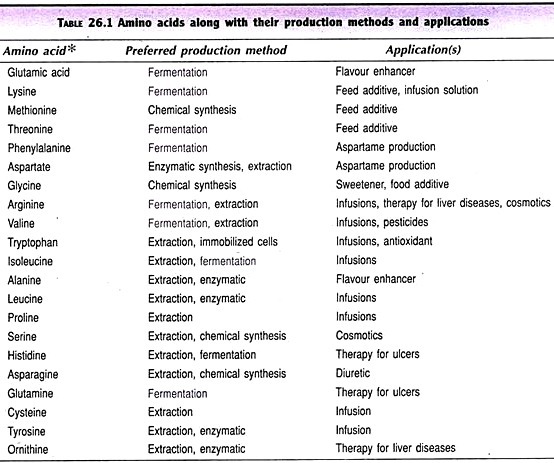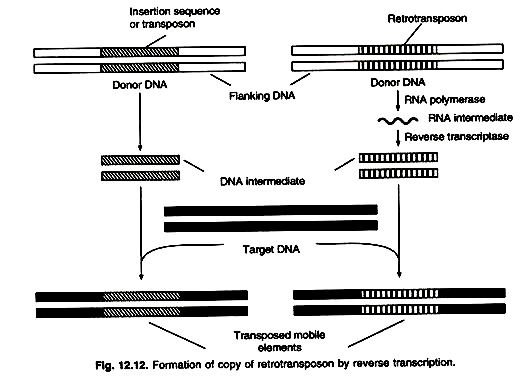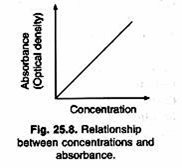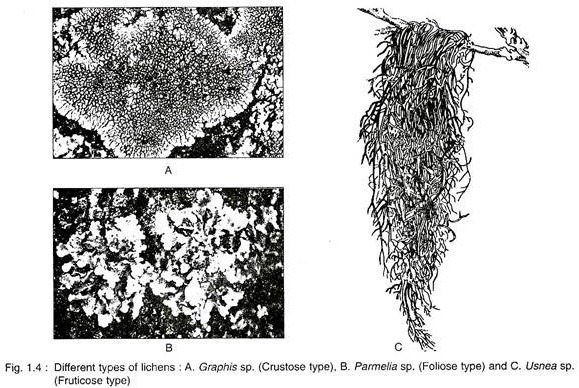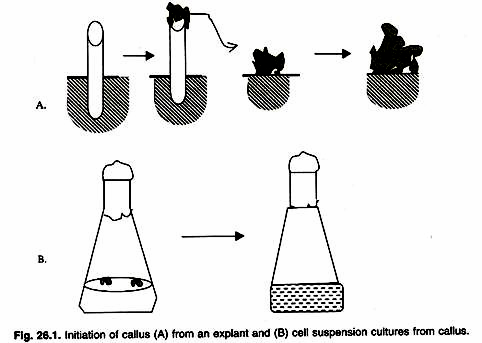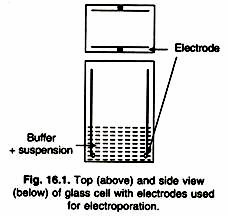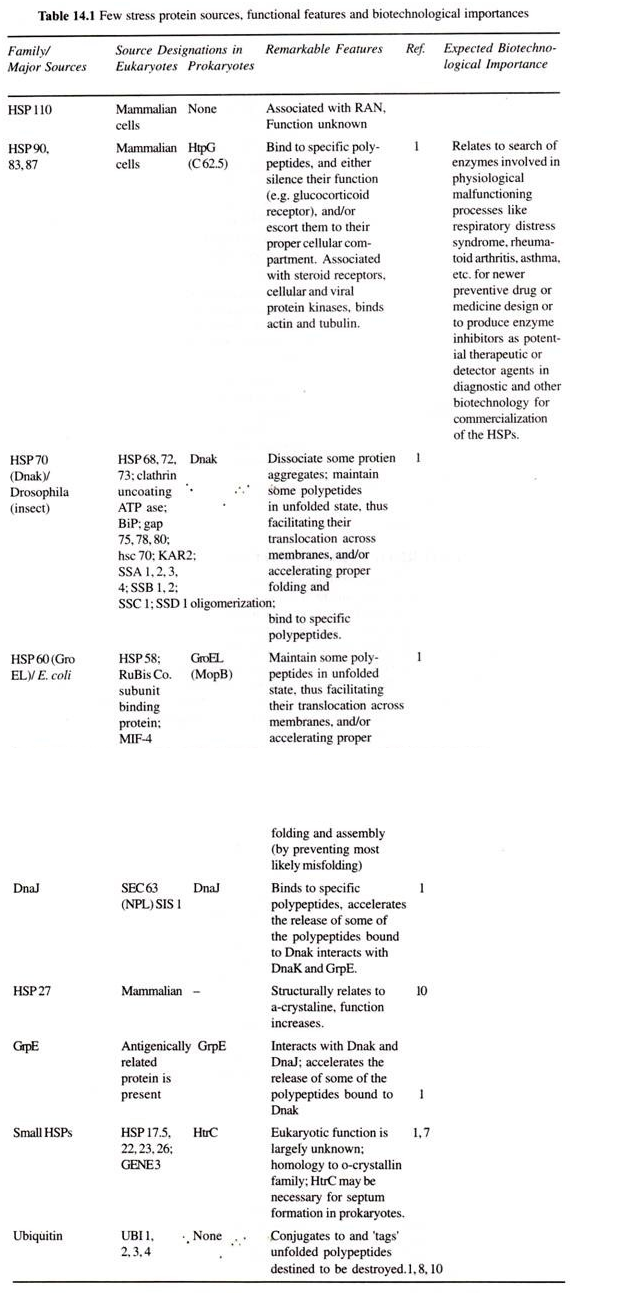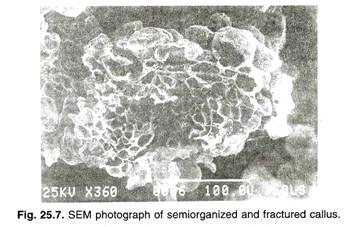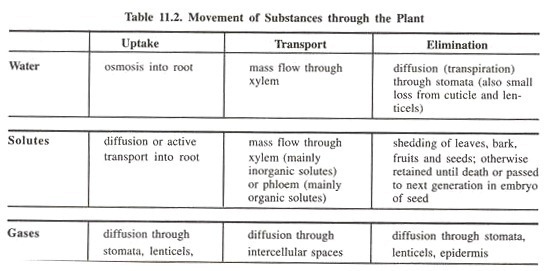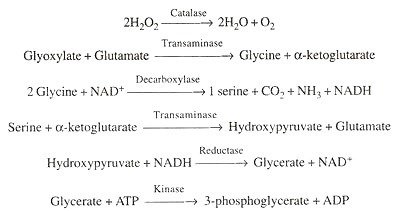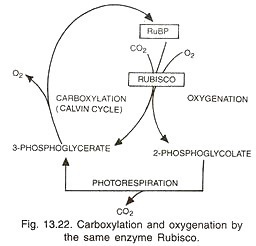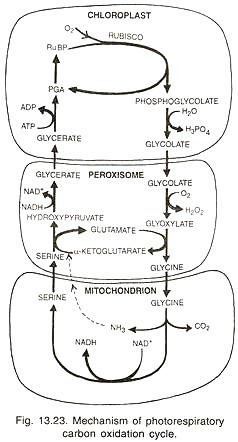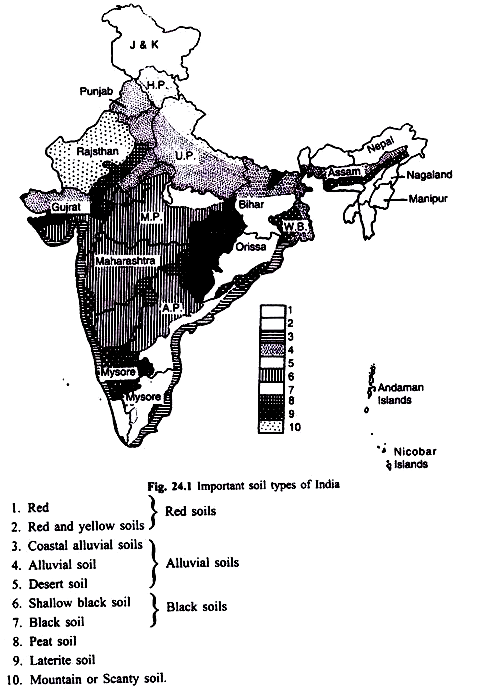In this essay, an attempt has been made to present briefly about plants. After reading this essay you will learn about: 1. Introduction to Plants 2. Do Plants Breathe? 3. Chemical Composition 4. Elements Essential for Healthy Growth 5. Different Organs 6. Uses 7. Characteristics 8. Factors Affecting Plants 9. Nomenclature 10. Groups 11. Water Absorption 12. Importance of Water 13. Ecological Classification and Others.
Essay Contents:
- Essay on Introduction to Plants
- Essay on Do Plants Breathe?
- Essay on the Chemical Composition of the Plants
- Essay on the Elements Essential for Healthy Growth of a Plant
- Essay on the Different Organs of Plants
- Essay on the Uses of Plants
- Essay on the Characteristics of Plants
- Essay on Factors Affecting Plants
- Essay on the Nomenclature of Plants
- Essay on the Groups of Plants
- Essay on the Water Absorption in Plants
- Essay on the Importance of Water in Plant Life
- Essay on the Ecological Classification of Plants
- Essay on the Reproduction in Plants
- Essay on the Transpiration in Plants
- Essay on the Translocation in Plants
- Essay on the Study of Mineral Nutrient in Plants
- Essay on the Movement of Substance in Plants
- Essay on the Photosynthesis in Plants
- Essay on the Photorespiration in Plants
- Essay on the Respiration in Plants
- Essay on the Plant Growth Regulators
- Essay on the Photoperiodism in Plants
Essay # 1. Introduction to Plants:
Plants are the silent workers of our planet, they want to live and also help others (animals including human beings) to live. They have well-developed metabolic system, which includes both anabolism (synthesis) and catabolism (breakdown). On the other hand, animals have only catabolic system.
Anabolic system, like photosynthesis, is present in most of the plants and catabolic system, like respiration, is present in all plants. Photosynthesis is dependent on light, but the respiration occurs both day and night (throughout their life period). Photosynthesis requires CO2, water, chlorophyll and light. Plants can absorb CO2 from the atmosphere and also utilize the CO2 produced from its own respiration.
Water is being absorbed by plants from the soil. Chlorophyll absorbs light mainly from the sun (like an antenna of a T.V.). The resultant product is the carbohydrate (mainly glucose) and O2 is released in the atmosphere as by-product. This O2 is utilised by both plants and animals. The above fact indicates that the rate of O2 production in plant is much more than that of respiration.
Thus, the produced O2 becomes available to animals in sufficient amount. The product of photosynthesis – the carbohydrates is being utilised by the plants during respiration and the excess food is being stored in different organs. We snatch the food and other products from their storehouse. On the other hand, during respiration the O2 is being used up and CO2 released.
The CO2 level in the atmosphere is being increased day by day, mainly due to three reasons:
i. Rapid destruction of forest by natural fire or artificial destruction of forests to get more agricultural land and also for urbanisation,
ii. Combustion on a large scale of wood and fossil fuels, such as coal, natural gas and mineral oil etc., and
iii. From respiration by the overgrowing human population (645 crores) of the world.
If the number of population of plant gradually reduce (by natural hazards or artificial destruction by human beings), the amount of CO2 will also gradually increase (CO2 plays the most vital role in trapping the heat radiated from the earth) to cause global warming due to greenhouse effect.
The CO2 contributes about 60% of the greenhouse gases. (Besides CO2, the principal greenhouse gases are water vapour, methane, nitrous oxide, tropospheric ozone, chlorofluoro- carbons and halons).
Due to green-house effect, the temperature of the earth is gradually increasing which eventually will cause more melting of ice-caps and glaciers of the polar regions of the earth (Greenland, Antarctica), the floating ice on the water of the seas may also melt partially.
These will cause expansion of the volume of sea water, as a result the sea water level may rise. The rise of sea water level may cause the reduction of our agricultural and living area due to flood.
So plants are very essential for the sustainability of animals, including human beings, to get O2 for respiration, for reducing the amount of CO2 from the atmosphere, for food, medicine, social functions etc. So, throughout history, men showed their keen interest to study the plant as a whole.
Essay # 2. Do Plants Breathe?
Plants require oxygen for respiration and release carbon dioxide. For this gaseous exchange, they unlike animals, have no specialised organs. It occurs by diffusion through stomata, lenticels and epiblema cells.
Reasons for Absence of Respiratory Organs in Plants:
i. Each part of plant takes care of its own gas exchange needs. There is little transport of gases from one part to another.
ii. Plants do not require much demand for gas exchange. All plant parts respire at rates far lower than animals.
iii. Leaves are well adapted to take care of their own needs of gases during photosynthesis. Moreover, leaves also utilize oxygen released during photosynthesis.
iv. In plants, cells are closely packed and located quite close to the surface of the plant. Thus the distance that gases must diffuse is not large.
v. In stems, the living cells are present beneath the bark and are in contact with air through lenticels.
vi. Epiblema cells of root are permeable to CO2 and O2.
vii. Loose parenchyma cells in leaves, stem and roots provide interconnecting network of air spaces for quick gas exchange.
Thus most cells of a plant have at least one part of their surface in contact with air.
Essay # 3. Chemical Composition of the Plants:
Plant body is made of material units, cells. Each cell has protoplasm usually surrounded by a rigid wall. Protoplasm undergoes metabolic changes and produces many ergastic substances. As plants cannot take solid food, they manufacture complex organic matters out of simple substances. We know that the whole animal kingdom, including human beings, has to depend on plants for the supply of food.
Chemically, protoplasm is a very complex matter having proteids, carbohydrates, fats, and other inorganic substances in composition. Proteids are made of carbon, hydrogen, oxygen, nitrogen, and in addition, often sulphur and phosphorus; carbohydrates and fats are composed of carbon, hydrogen and oxygen. Cell wall is primarily made of insoluble carbohydrate, cellulose.
An idea about the chemical composition of the plant body can be had by the following method. A plant is dried at a high temperature. Naturally it will lose water. The percentage of water in plants is very high, often as much as 95%. The proportion of water can be determined by proper weighing. The dried plant gets charred forming a black mass of charcoal.
That is mainly carbon which forms almost half the dry weight of the plant. Now it is burnt. The combustible matters like proteins, carbohydrates and fats are converted into carbon dioxide, sulphur dioxide, ammonia, water vapour, and other gases and thus escape, which may be properly collected and composition noted.
The white incombustible residue left behind is ash, which is nothing but the oxides of the metals constituting the plant body. The percentage of ash varies; but on the average, it forms nearly 5 per cent, of the total weight of the plant. On proper analysis ash is found to be composed of quite a large number of elements, many of them, of course, being present only in minute traces.
The following elements are, however, always present in ash: potassium (K), calcium (Ca), magnesium (Mg), iron (Fe), sodium (Na), sulphur (S), phosphorus (P), chlorine (CI), and silicon (Si). Elements like manganese (Mn), boron (B), zinc (Zn), copper (Cu), and molybdenum (Mo) may be present in slight traces.
Essay # 4. Elements Essential for Healthy Growth of a Plant:
It is found that thirteen elements are constantly present in the plant body, as revealed by ash analysis. The mere presence in the composition does not necessarily mean that they are all essential for the growth and nutrition of plants. What elements are essential and what are not, can be determined by water-culture experiment.
As plants absorb most of the elements from soil, a standard solution is prepared with those elements, and plants are grown there. By conducting a series of experiments (to be discussed presently) it has been found that ten elements are very important for the nutrition of plants and the remaining three, referred to as non-essential elements, are not directly concerned with nutrition.
It has been found that minute traces of the elements like boron, zinc, copper, manganese, and molybdenum are equally necessary for the normal development of the plants. Thus essential elements are put into two groups.
Essential elements:
i. Major elements are macro-elements—C, H, O, N, S, P, K, Mg, Ca, Fe.
ii. Trace elements or micro-elements—B, Zn, Cu, Mn, Mo.
That the above elements are essential for the healthy growth of a plant can be proved by water-culture experiment (Fig. 162). It is undoubtedly a laborious one. A few wide mouthed jars are taken, thoroughly washed and rinsed in nitric acid. Seeds are germinated on sterilised saw dust.
A few healthy seedlings of more or less same size are selected for experiment. Jars are labelled as 1, 2, 3, 4 and so on. The first jar 1 is filled with normal culture solution, i.e. a solution with all the elements essential for growth of plants. Culture solution should not be alkaline. Culture solutions of various compositions are used. Knop’s normal culture solution is a quite suitable one.
Knop’s normal culture solution:
Potassium nitrate, KNO3—1–0 g.
Potassium phosphate KH2PO4—1’O g.
Magnesium sulphate MgSO4—1 ‘0 g.
Calcium nitrate, Ca(NO3)2—3’0 g.
Ferric chloride, FeCl3—a few drops.
Water—6 litres.
Jar No. 1 is filled with normal culture solution; a healthy seedling is selected and the roots after proper washing are inserted in the jar through the cork fitted at the mouth. A bent glass tube is put for aeration of roots and the jar is covered by black paper to cut off light.
Now a series of jars are similarly filled with plants but one element, in turn, is eliminated from the solution poured in every jar; thus jar 2 has no potassium salt, jar 3, no calcium salt and so on. Thus the experiment is set up.
After a few days it is observed that only the first one is having normal healthy growth and the rest are all weak, deficient, and stunted. Plant in jar 2 without potassium salt is weak and bears unhealthy leaves; in jar 3 without calcium salt the plant has poorly developed roots and spotted deformed leaves; leaves are yellow (chlorotic) in that without iron salts, and so on.
That shows beyond doubt that the elements used in water culture solution and hydrogen, oxygen and carbon are absolutely necessary for the healthy growth of the plant. The essential elements are absorbed either as salts and compounds from the soil or as gas from the air by the two main absorbing organs, roots and leaves.
Recent researches have, however, shown that minute traces of manganese, boron, zinc, copper and molybdenum are also essential for normal growth.
Unlike the essential elements, they do not enter into the composition of plant body but they are absolutely essential as catalysts or growth regulators. Deficiency symptoms of these trace elements are not always observed for they are generally present in the soil or in the water culture where even the very pure analar reagents have traces of these elements.
The requirements of these trace elements are fantastically small, not more than 1-3 parts per 100 million parts. Carbon is absorbed from the air as carbon dioxide gas. Though the percentage of this gas in atmosphere is 0–03, that is the only source of carbon for the plants which really forms nearly half of the dry weight of the plant and is the primary constituent of protoplasm, cell wall, food matters, etc.
Hydrogen and oxygen are taken mainly as water from the soil. Free oxygen is also absorbed from air during respiration. They enter into the composition of cell wall, reserve materials, and the protoplasm itself. Water is indispensable for protoplasmic activities and also for translocation of dissolved food materials.
Nitrogen forms an important element of protein and a considerable part of protoplasm. Though atmosphere has 78% of molecular nitrogen, it is not available to plants as such. It enters all visible plants and animals and comes out again without taking part in the life processes. Nitrogen mainly comes from soil as nitrates and ammonia salts.
The soil bacteria play important roles in converting nitrogenous matters into nitrates for ready absorption. Atmospheric nitrogen can be fixed by some free nitrogen-fixing bacteria and also by some bacteria which inhabit the roots of leguminous plants forming characteristic nodules.
The legume bacteria lead a life of mutual friendship (symbiosis) with the plants. The amount of nitrogen fixed by the bacteria is not very high—about 10% of the total nitrogen fixed in the soil.
Certain blue green algae can also fix nitrogen, which has considerable economic importance in increasing fertility of the rice fields, particularly in the tropics. During thunder storm free nitrogen becomes available to some extent. The nitrogen of the air combines with oxygen to form nitric oxide—Na-+ O2=2NO. This nitric oxide unites with O4 of form nitrogen peroxide—2NO+O2=2NO2.
The nitrogen peroxide dissolves in falling rain water and forms nitrous acid and nitric acid—2NO2+H2O=HNO2+HNO3, and reach the soil, where they combine with metals like calcium and potassium to form nitrites and nitrates.
The nitrates are directly absorbed by the plants, whereas the nitrites are further oxidised to nitrates. Insectivorous plants get part of their nitrogen requirement from the bodies of the insects they capture.
Nitrogen occurs in the soil in organic form as complex proteins, and in inorganic form as nitrates and nitrites, and also ammonia and ammonium ions. The proteins of plant and animal bodies are broken down to simpler substances by the action of decomposers, the soil micro-organisms and fungi.
Ammonia is such a simple substance which readily dissolves in water. It reacts chemically with H-ions to form Ammonia ions NH4+. Only some plants can utilise nitrogen in this form for building up complex proteins. In case of most of the plants a group of micro-organism called nitrifying bacteria of the soil are responsible for converting the ammonium compounds into nitrates.
The process nitrification, as it is called, occurs in two stages—first, by the action of nitrite-bacteria ammonium compounds are oxidised into nitrites (NO2–), and then nitrites are acted upon by the nitrate-bacteria to be finally oxidised into nitrates (NO3–). Nitrates thus formed are readily absorbed by the plants and utilised.
Nitrifying bacteria work only under aerobic conditions, i.e. when oxygen is available. Under anaerobic condition another group of micro-organism, the denitrifying bacteria change the remaining nitrates into free nitrogen which gradually escapes to the atmosphere.
The whole picture, referred to as nitrogen cycle is represented by the following schematic diagram;
Sulphur is absorbed as sulphate from the soil. It is present in proteins and protoplasm.
Phosphorus is also obtained as phosphates from the soil. It is richly present in nucleo-proteins and has direct influence on cell-division and growth.
Potassium is absorbed as salts from the soil. It is important for the formation of healthy vegetative organs and maturation of fruits and seeds. Potassium is present abundantly in the meristematic region. It helps in the synthesis of reserve materials—carbohydrates, proteins, and fats.
Magnesium is also taken as salts. It is present in chlorophyll and has influence on the formation of proteins.
Calcium is essential for healthy growth. In absence of cium, plants get diseased. It is abundantly present in the middle lamella of the wall. Calcium neutralises organic acids like oxalic acid forming calcium oxalate. It is also absorbed as salts.
Iron does not actually enter into the composition of chlorophyll, but minute quantities are essential for the formation of chlorophyll. Plants become chlorotic in absence of iron. Perhaps iron acts as a catalyst for the formation of complex chlorophyll structure.
Sodium, chlorine, and silicon are present in the ash. But they are not essential for the normal growth of the plants.
Essay # 5. Different Organs of Plants:
It has a long cylindrical un-branched or branched axis or plant axis that bears a number of lateral appendages. Plant axis is differentiated into above ground shoot system and underground root system. Root system is usually brown and develops from radical part of embryo. Shoot system is at least partly greenish.
It grows from plumule part of embryo. Root system consists of root and its branches. Shoot system is made up of a stem, its branches, leaves, flowers, fruits and their contained seeds. The different structures borne on the plant axis are called organs. There are two types of plant organs, vegetative and reproductive.
Reproductive organs are meant for formation of new plants while vegetative organs take part. In nutrition, growth and maintenance of plant body. Vegetative organs are three in number— root, stem and leaves. Reproductive organs are also of three types— flowers, fruits and seeds.
Types of Plant Organs:
I. Vegetative Organs:
Some of the vegetative organs are:
i. Root:
It is the underground non green part of the plant that anchors the plant to the soil and takes part in absorption of water as well as minerals. Typically, there is a main or tap root, its branches or secondary roots, tertiary roots, etc. The finer root branches are called rootlets. The tip of a rootlet is covered by a root cap. Behind the tip are present a number of fine outgrowths called root hairs.
ii. Stem:
It is commonly the above ground erect part of the plant. It bears lateral branches. At intervals the stem and its branches possess swollen areas or nodes. Leaves are borne in the region of nodes. Part of the stem between two adjacent nodes is called internode.
The angle between the leaf and the upper or younger part of stem is called axil. It bears an axillary bud which later on develops into a branch or axillary branch. Growth of the stem or its branch is accomplished through a bud present at its tip. It is known as terminal or apical bud. The term shoot is applied to stem along with its leaves.
iii. Leaves:
They are green dissimilar lateral outgrowths which develop on the stem or its branch in the region of nodes. A leaf has three parts— leaf base, petiole and lamina. Lamina or leaf blade is specialized for photosynthesis. It is also the main seat of transpiration.
II. Reproductive Organs:
Some of the reproductive organs are:
i. Flower:
It is a specialized and condensed shoot that takes part in sexual reproduction. A flower has a broad surface called thalamus or torus. The latter bears four types of structures— sepals (green), petals (coloured other than green), stamens (microsporophyll’s) and carpels (megasporophylls).
Sepals and petals are nonessential floral organs while stamens and carpels are essential floral organs. A stamen has a broad terminal anther that contains tiny structures named pollen grains or microspores. A carpel has receptive tip or stigma, a stalk-like style and a basal swollen part named ovary. The ovary contains one or more oval structures termed ovules.
ii. Fruit:
It is the name of ripened ovary. Fruit has a wall or pericarp and one or more seeds.
iii. Seed:
It is a ripened ovule. Seed has an embryo, a food reserve and protective covering called seed coat. The embryo has an axis (embryo axis or tigellum) and one or two seed leaves called cotyledons. One end of embryo axis possesses plumule or future shoot.
The other end has radicle or future root. Radicle often bears a root cap at its tip. Plumule is protected by a few small leaves. The portion of the embryo axis lying between the cotyledons and the plumule is called epicotyls while the one between cotyledons and the radicle is termed as hypocotyl.
Essay # 6. Uses of Plants:
Humans showed interest in plant life for its various uses.
Some are:
i. Foods:
Our principal foods, like cereals, pulses, fruits and others are derived from the plants.
ii. Fibres:
Plant fibres like cotton, jute, flax and hemp are used in clothing and other purposes.
iii. Wood:
Stem of different plants are used as wood in the preparation of furniture, boat, bridge etc.
iv. Other useful things:
Vegetable oil, resin, rubber, medicines, dyes etc., are directly or indirectly collected from the plants.
v. Fossil fuels:
Fossil fuels, such as coal, petroleum and natural gases are the products of plants of past geological period.
vi. Soil erosion:
Trees and grasses that grow in different places help to retain water and thus prevent soil erosion.
vii. Shelter:
Plants in the forest provide good shelter and food for the birds and wild animals.
viii. Supply of nitrogen:
Some plants, like algae and bacteria can fix atmospheric nitrogen and increase soil fertility.
ix. Aesthetic pleasure:
Plants give us aesthetic pleasure, which cannot be measured in terms of money.
x. Ecological balance:
In addition to the above importance, plants are with us as a friend to sustain our environment by absorbing excess CO2 from the nature and releasing O2 to the atmosphere and thereby they help us to survive in our immediate environment. Thus the human beings are now realising the importance of the plants.
(The Greenhouse Effect is the rise in temperature that the earth experiences because of certain gases in the atmosphere such as water vapour, CO2, nitrous oxide, methane, tropospheric ozone, chlorofluorocarbons and halons. Without these gases, heat would escape back into space and Earth’s average temperature would be about -18°C. Thus, these gases are referred to as greenhouse gases.)
Essay # 7. Characteristics of Plants:
The important characteristics of the plants are:
i. Life cycle:
Each plant has a definite life cycle and within that cycle each plant carries out different activities like growth, reproduction etc. in a definite sequence from birth to death.
ii. Cell structure:
Plant body is made up of one or more structural unit, the cell. Protoplasm of each cell is enclosed in a membrane, called cell membrane. The cell membrane is further enclosed by a hard covering, the cell wall.
iii. Protoplasm (Protos – first; plasma – form):
It is the actual living matter of a cell, which performs all the vital activities.
iv. Metabolism:
Sum-total of biochemical changes that takes place in the protoplasm of a living cell is called metabolism. Metabolism includes both anabolism and catabolism. Anabolism is a process by which the simple food particles are produced and stored in the protoplasm, e.g., photosynthesis.
On the other hand, catabolism is the process by which the stored potential energy (food) in the protoplasm is converted into kinetic energy, e.g., respiration. In this process the stored food materials are utilised.
v. Nutrition:
Plants require nutrients for the synthesis of their protoplasm and also for their growth. Plants can synthesise their foods through photosynthesis.
vi. Respiration:
Respiration is a continuous process in plants, in which they usually take up O2 from the atmosphere for oxidation of food materials (carbohydrate, protein etc.) and, as a result, release CO2 and energy. This energy is required to perform all the vital activities of plants.
vii. Growth:
It is the permanent increase in form as well as volume of plant, usually accompanied by increase in dry weight. The growth is the final product of successful metabolism, where the rate of anabolism is much higher than catabolism. In many plants, growth continues indefinitely.
viii. Reproduction:
All plants possess the capacity to produce offspring of their own type. It is of three types – vegetative, asexual and sexual.
ix. Movement:
Most of the plants are not able to move from one place to other and generally they perform the movement of curvature. Only some lower plants (e.g., Chlamydo- monas, Volvox etc.) can move from one place to other.
x. Adaptability:
They have the power to adjust with the environment.
xi. Sensitivity:
The plants are very much sensitive to change in the environment.
xii. Excretion:
They can produce nitrogenous (Quinine, Nicotine, Atropine, Caffeine etc.) and non-nitrogenous (Resin, Gum, Latex, Tannin etc.) substances as by-products of metabolism, which are either stored or excreted from their body.
Essay # 8. Factors Affecting Plants:
Some of the factors that are affecting plants are described below:
i. Climatic Factors:
Important climatic factors affecting plants are temperature, light, humidity, precipitation and wind. All the factors are interdependent. Further, climate markedly affects soil and biotic factors. In a fast country like ours climate varies from tropical to temperate.
We have seen that all physiological processes go on most actively at optimum temperature which is widely variable with plants and climatic conditions. There are the cardinal points, minimum and maximum, below and above which activities are not possible, light is the ultimate source of radiant energy indispensable for photosynthesis. It has positive influence on transpiration, growth, development and movement.
Water vapour present in air is termed atmospheric humidity. It precipitates mainly in form of rain. A part of rain water percolates down the soil and becomes available to the plants. Rainfall has marked effect on vegetation.
In our country rainfall varies from about 7–5 cms or 3 inches a year in the arid regions of Rajputana to nearly 1200 cms in Cherrapunji in Meghalaya, the region of the highest rainfall in the world. In India rains are associated with monsoon winds.
Wind profoundly affects the rate of transpiration, dispersal of fruits and seeds and shape and branching of trees. Plants adjust themselves to stand against high wind prevailing in situations like sea-shore and deserts.
ii. Edaphic Factors:
Physical nature and chemical properties of soil, and particularly amount of water present in the soil available to the plants are important edaphic factors.
iii. Biotic Factors:
These include influence of living things on plants. Men, grazing animals, birds, earthworms, and even fungi and bacteria present in soil variously influenced the vegetation.
Essay # 9. Nomenclature of Plants:
Plants identified and described must be named. Though almost all the plants have common names but they do not serve our purpose. For proper co-ordination amongst workers names should be internationally acceptable. Linnaeus introduced ‘binomial system’ of nomenclature which has been followed all over the world. Every name has two parts, the generic part and the specific part.
The generic part of the name is written in capital and the specific part in small initial letter. Both the names as a ride are indicated in italics and the name of the author in Roman script. Banyan is Ficus benghalensis, pipul is Ficus religiosa and fig is Ficus hispida. So all the three belong to the same genus Ficus but form different species.
The abbreviated name of the author or the person who first published the name of the plant with a suitable description, is put after the specific name. Pea is Pisum sativum Linn. Here Linn indicates that Linnaeus was the author.
Essay # 10. Groups of Plants:
At present, about 400,000 different species of plants are recorded throughout the world in different habitat. So, it is very difficult to study the plants without following a definite system.
It is mentioned in Upanishads that Indians had studied the plants from medical point of view. But, the scientific attempt on the classification of plants began with the classical work of the Greek philosopher, Theophrastus (372-286 B.C.) in “Historia Plantarum”.
Later, in 16th century, many herbalists like Brunfels, Fuchs made some valuable contributions towards the study of Systematic Botany. After a long gap, in 18th century, remarkable contribution was made by a Swedish botanist, Carolus Linnaeus or Carl Linne (1707-1778).
His classification first appeared in Hortus Uplandicus (1732), with more detail in Genera Plantarum (1737), and later he completed his work and presented it in Species Plantarum (1753). Thus, he is considered as the “Father of Modern Botany”.
Later on, many workers like de Candolle, Bentham and Hooker, Eichler, Engler and Prantl, Hutchinson, etc., and recently Takhtajan, Cronquist, Dahlgren and Thorne have proposed their classifications. The classification of Bentham and Hooker appeared in Genera Plantarum (1862-1883) – it is being followed in Indian Herbaria and also found to be easy to understand by the beginners.
Thus, the brief outline of classification of Bentham and Hooker is mentioned:
The plant kingdom has been classified into two sub-kingdoms:
i. Cryptogamia, the non- flowering plants, and
ii. Phanerogamia, the flowering plants.
The cryptogamia has been further divided into three divisions :
A. Thallophyta,
B. Bryophyta, and
C. Pteridophyta.
A. Thallophyta:
Plant body is thallus-like i.e., not differentiated into root, stem and leaves. This group consists of most primitive and simple plants. The plants may consist of single cell (unicellular) or many cells (multicellular) and the sex organs are, in general, unicellular.
Based on the modes of life process, it is divided into four sub-divisions:
a. Algae,
b. Fungi,
c. Bacteria, and
d. Lichen.
(a) Algae:
They are green in colour due to the presence of green pigment chlorophyll and because of chlorophyll they are able to prepare their own food i.e., they are autophytes. The lower forms are unicellular, but the plants of higher forms are multicellular and become differentiated into organs resembling root, stem and leaves (Fig. 1.1).
The algae are used as food (Laminaria, Alaria, Durvillea etc.), fodder (Laminaria, Sargassum, Fucus etc.), and also used in the preparation of agar-agar (Celidium, Cracilaria, Hypnea etc.), carragenin (Chondrus crispus), etc. The large algae are called Kelp (Macrocystis pyrifera, more than 60 metres in length). 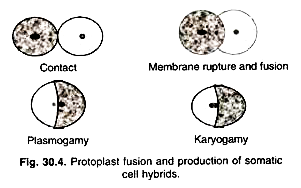
(b) Fungi:
They are devoid of green pigment, the chlorophyll and are not able to prepare their own food. They, therefore, live as saprophytes on dead and decaying vegetables or on organic materials or as parasites on living organism, i.e., they are heterophytes (Fig. 1.2).
They may be unicellular (Saccharomyces) or multicellular (Agaricus, Polyporus) and the largest known organism in this world is the fungus Armellaria bulbosa (mycelial body) reported from America, which covered an area of more than 12 hectares (30 acres).
Some fungi are destructive in nature, cause diseases of plants (brown spot of rice, late blight of potato caused famine in Bengal and Ireland, respectively). Some of them are very useful, as they yield valuable drugs (Penicillin from Penicillium notatum and P. chrysogenum) and some others are used as food, the mushrooms (Agaricus brunnescens, A. campestris, Pleurotus sajor-caju etc.)
These are microscopic, unicellular microorganisms with a saprophytic mode of nutrition (Fig. 1.3). They may be pathogenic and at times cause alarming situation in the plants and animals including human beings. Some are useful to increase the soil fertility by adding nitrogen through fixation of atmospheric nitrogen.
(d) Lichens:
These are specialised organisms, composed of algae and fungi (Fig. 1.4). They live together in a close symbiotic association. The algal partner is capable of manufacturing food and, on the other hand, the fungus helps in absorption and retention of water. Though symbiotic, the tungal partner commonly dominates over algal partner. Lichens are used as food, fodder and in the manufacture of soap, dyes, perfumes etc.
B. Bryophyta:
The plant body of bryophytes is thailoid (Riccia, Marchantia etc.) or may be differentiated into stem and leaf-like organs (Funaria, Polytrichum etc.), but does not possess any true root (Fig. 1.5). They are usually found to grow in moist and shady places and are of little economic importance. Starting from Algae up to Bryophytes, the dominating plant body is gametophyte i.e., haploid (n).
C. Pteridophyta:
It is the highest group of cryptogams. Starting from Pteridophyte onwards, the dominating plant body is sporophytic (2n). The plant body is completely differentiated into root, stem and leaves (Fig. 1.6). They possess well- differentiated vascular system – for that they are called vascular cryptogams.
They generally grow in moist and shady places. Members, like Marsilea and some ferns (Ampelopteris prolifera etc.), are edible. Some fossil members contribute the world’s major fuel, the coal. The cone of Lycopodium is used in the production of an useful homeopathic medicine, named as Lycopodium.
The phanerogamia sub-kingdom is further divided into two divisions: Gymnospermia and Angiospermia.
The phanerogamia shows complete differentiation of plants into root, stem and leaves like Pteridophyta. In addition to the above characteristics, they also produce flowers and seeds. The dominating plant body of phanerogams is sporophytic (2n).
I. Gymnospermia:
These are naked-seeded plants, i.e., the ovules are not enclosed in the ovary and thereby the seeds remain exposed or naked. Most of the plants are big trees (Fig. 1.7).
The group is economically important:
i. As a good source of timber.
ii. Some yield tar, charcoal, methyl alcohol, tannin, etc.
iii. Some are used in the manufacture of paper, ink, etc.
iv. The valuable medicine ephedrine is prepared from Ephedra.
v. Like Pteridophytes, the fossil members contribute fossil fuels like coal, lignite, etc.
Common members are Cycas, Pinus, Cedrus, Ephedra, Ginkgo, etc.
II. Angiospermia:
These are closed-seeded plants, i.e., the seeds are enclosed in the ovary and thereby they remain enclosed within the fruits (Fig. 1.8). This group is further divided into two classes: Dicotyledons and Monocotyledons.
The class Dicotyledons comprises of the plants having two cotyledons or seed- leaves, e.g., Pea, Gram, Castor, Mango etc., and the plants of Monocotyledons having one cotyledon or seed-leaf, e.g., Rice, Wheat, Maize, Coconut etc. The plants under the Angiospermia show high economic value.
Essay # 11. Water Absorption in Plants:
i. Passive Water Absorption:
The force for this type of water absorption originates in the aerial parts of the plant due to loss of water in transpiration. This creates a tension or low water potential of several atmospheres in the xylem channels.
Creation of tension in the xylem channels of the plant is evident from:
(i) A negative pressure is commonly found in the xylem sap. It is because of it that water does not spill out if a cut is given to a shoot,
(ii) Water can be absorbed by a shoot even in the absence of the root system,
(iii) The rate of water absorption is approximately equal to the rate of transpiration. Root hairs function as tiny osmotic systems.
Each root hair has a thin permeable cell wall, a semi-permeable cytoplasm and an osmotically active cell sap present in the central vacuole. Because of the latter a root hair cell has a water potential of -3 to -8 bars. Water potential of the soil water is -.1 to -.3 bars. As a result water of the soil passes into the root hair cell. However, water does not pass into its vacuole.
Instead it passes into apoplast and symplast of cortical, endodermal and pericycle cells and enter the xylem channels passively because of the very low water potential due to tension under which water is present in them, caused by transpiration in the aerial parts. A gradient of water potential exists between root hair cell, cortical cell, endodermal, pericycle and xylem channels so that flow of water is not interrupted.
ii. Active Water Absorption:
It is the absorption of water due to forces present in the root. Living cells in active metabolic condition are essential for this. Auxins are known to enhance water absorption (even from hypertonic solution) while respiratory inhibitors reduce the same. Therefore, energy (from respiration) is involved in active water absorption. Water absorption from soil and its inward movement may occur due to osmosis.
Passage of water from living cells to the xylem channels can occur by:
(a) Accumulation of sugars or salts in the tracheary elements of xylem due to either secretion by the nearby living cells or left there during decay of their protoplasts,
(b) Development of bioelectric potential favourable for movement of water into xylary channels,
(c) Active pumping of water by the surrounding living cells into tracheary elements.
Root pressure is a manifestation of active water absorption.
Essay # 12. Importance of Water in Plant Life:
Life originated in water. Lowest plants like the green algae live in water. Even to the higher plants, which through series of changes and adjustments have adapted themselves to terrestrial habits, water is of paramount importance.
Protoplasm, the physical basis of life, remains saturated in a high -percentage of water. In fact, functioning of the mysterious fluid protoplasm depends on the large amount of water it contains. In the active and young vigorously growing cells water content is very high, approaching 95%.
In the hard woody portions the amount of water is nearly 50%. Dormancy of the seeds is due to low water content, varying from 10% to 15%. Protoplasm becomes less and less active if the normal amount of water is removed, until a point is reached when death ensues.
A certain amount of water in the vacuoles of the cells is necessary to maintain the normal condition of the turgor, what is essential for the growth of the cells and also for the erectness of the plant. Water is essential for continual translocation from one part of the plant to another part. As far as it is known, all foods and dissolved materials translocated in a plant move from cell to cell in watery solution.
Many of the various organic compounds are formed by the combination of water with certain materials that enter the plant from the soil and the air. A supply of water in the soil is also needed to replace the water lost by transpiration.
The process of absorption of inorganic salts by the root-hairs is very complex and little understood. Probably salts come in by diffusion through the plasma membrane independently of the movement of water.
Essay # 13. Ecological Classification of Plants:
As water is of the greatest importance to the plants, it is customary to classify the plants into the following ecological groups on the basis of their water relation.
i. Hydrophytes or aquatic plants.
ii. Mesophytes, the common land plants, flourishing best in moderate water-supply.
iii. Xerophytes, plants of very dry regions like deserts.
iv. Halophytes, plants growing in sea-shore or saline marshes where absorption of water becomes difficult.
i. Hydrophytes:
These are plants which grow in situations with high percentage of water. They may be free-floating, submerged or amphibious.
Roots and analogous organs are very poorly developed as the plants can absorb water by entire surface. Stems are usually soft and spongy. Leaves are generally dissected, ribbon-like in submerged plants with very scanty cuticularisation. Stomata and palisade cells are lacking. Conducting and mechanical tissues are very poorly developed.
Air-spaces are abundant for giving buoyancy to the plants. Many aquatic plants often show heterophylly. Vegetative multiplication far exceeds sexual reproduction. Fruits and seeds are often provided with air chambers for facilitating dispersal by water.
Amphibious plants have poorly developed root system and ample air-spaces like typical hydrophytes; but they more or less resemble the mesophytes in characters of leaves and arrangement of conducting tissues. Common plants—Vallisneria (B. Pata shaola) Hydrilla, Utricularia (B. Jhanji), water-hyacinth, Pistia (B. Barapana lotus, lily, water-plantain, arrowhead.
ii. Mesophytes:
These are the common land plants growing in moderate water- supply. So far as structural peculiarities are concerned, they are intermediate between hydrophytes and xerophytes. Leaves are usually broad and thin and possess well-developed stomata. Production of root-hairs is a distinctive character.
iii. Xerophytes:
These are plants growing in very dry situations like deserts. They have adaptations to stand against extreme heat, dry air, intense light and high wind.
Root system is very strongly developed, both in length and volume. Aerial portions are stunted in growth. Transpiring surfaces are very much reduced for minimising the loss of water. Leaves are often modified into spines and scales; they may be thin, rolled or folded.
Strong development of cuticle with extra-coating of wax, resinous matters, sunken stomata, formation of dense hairs, etc., are distinctive characters. Succulence for storage of water is very common. Common plants—Cacti, Opuntia (B. Fanimanasha), spurges, Ravenala (traveller’s tree, B. Pantha padab).
iv. Halophytes:
These are plants growing in saline marshes or on sea-shore where absorption of water becomes difficult due to the preponderance of salt. This type of soil is called physiologically dry.
Plants of saline marshes form a special type of vegetation of low forest, called mangrove, as found in Sundarbans. The plants produce stilt roots for extra support and special aerating roots or pneumatophores for absorbing oxygen from air.
Succulence is common in some plants. They usually show cymose type of branching. A special mode of germination, called vivipary, is exhibited by the mangrove plants (Fig. 37). Common plants—Rhizophora, Heritiera (B. Sundri), Ceriops (B. Goran).
Essay # 14. Reproduction in Plants:
i. Vegetative Reproduction:
It is the simplest method, where parts may get detached from the parent plant and lead independent existence. In lower unicellular plants like yeast, outgrowths in form of buds come out which, in course of time, are separated from the mother cell. In filamentous algae like Spirogyra the filament breaks up into one- or more- celled fragments, each of which may multiply and carry on independently.
Bryophytes like mosses and liverworts produce special bodies, called gemmae, and multiply through them. Ferns reproduce vegetatively by rhizomatous stems. In higher plants vegetative multiplication occurs through modified roots, modified stems like runners, rhizomes, etc., bulbils and adventitious buds.
Artificially multiplication is secured by cuttings, layerings, buddings and graftings. These are common devices employed by the florists.
ii. Asexual Reproduction:
Here special minute, usually unicellular bodies, called spores, are formed which directly can produce new individuals. Spores may be naked or walled. Naked motile ciliated spores of algae are called zoospores. The spores of bryophytes, pteridophytes and higher plants are non-motile and have cell wall. The spore- containing sac is called sporangium.
iii. Sexual Reproduction:
This method essentially involves the fusion of two usually naked sexual or reproductive units called gametes. Individually gametes are of no use for reproduction, but by fusion they give rises to the zygote, which alone can produce a new plant. When the two gametes are morphologically similar, they are called isogametes.
Product of fusion of two isogametes is zygospore and the process is known as conjugation. Dissimilar gametes are called heterogametes. Obviously one of them is male and the other is female. Here zygote is called oospore and the process is fertilisation.
Of the two heterogametes, the male, called antherozoid or spermatozoid, is, as a rule, much smaller than the female gamete and is motile and active. The female gamete is much larger, always stationary or sessile and passive. It is called egg, ovum or oosphere. The male gamete-containing sac is known as antheridium and the female gamete-containing one is oogonium or archegonium.
Parthenogenesis:
Though sexual reproduction essentially demands union of two gametes, in some lower plants one of the gametes (usually the female one) behaves like a zygote without uniting with the corresponding one. This process is called parthenogenesis, and the spore concerned is known as azygospore or parthenospore.
Apogamy and Apospory:
Normally the plants having sexual method of reproduction show an alternation of two generations-—gametophytes with haploid chromosomes, and sporophytes with diploid chromosomes. But there are cases in which one generation may be wholly or partly eliminated. If the eliminated part be gametophyte, the phenomenon is called apogamy; and if that is sporophyte, the phenomenon is known as apospory.
In many ferns buds may vegetatively develop on the prothallus which grow into sporophytic plants. Thus formation of sporophyte has taken place without the act of fertilisation, which is not certainly normal. In some seed- plants certain cells of the nucellus, which belongs to the sporophyte, may develop into embryos, thus completely eliminating the whole gametophytic generation. These are cases of apogamy.
Apospory is quite common in some ferns in which prothallus, the gametophyte, may develop from the sporangia, and even from the leaf. The prothallus so formed bears sex-organs like a normal one, though it has not developed from a spore. There are ferns and seed-plants which exhibit both apogamy and apospory.
Essay # 15. Transpiration in Plants:
Plants usually absorb water much in excess of their need through the innumerable root-hairs. Some amount of water is utilised for metabolic activities and the surplus goes out as water vapour. This process of getting rid of excess of water in the form of water vapour, is known as transpiration.
It may take place through the exposed aerial parts of the plants. But as structure and position of leaves are very much conducive to the process, they are the main transpiring organs of plants. It should be noted that transpiration is not simple evaporation, but a physiological process where the outgo of water is regulated by protoplasm. A twig detached from a plant would evaporate much more water than one attached to it.
Maximum transpiration takes place through the stomata present on the leaves. This is called stomatal transpiration. In day time the two guard cells manufacture sugar and thus the sap is concentrated. By osmosis they absorb water from the adjoining cells and become turgid, when they stand away from each other making the stomatal aperture wide open.
The spongy cells evaporate water into the intercellular spaces which accumulates at the sub-stomatal chamber and ultimately diffuses through the stomatal opening, provided, of course, the outside air is dry. At night the turgor pressure of the guard cells decreases and they become flaccid, naturally closing the aperture.
The epidermal cells have cuticle on the outer walls which is almost impervious to water. In plants of moist and shady places cuticle is very thin, and feeble transpiration becomes possible through it.
This is cuticular transpiration. It is about 10% of the entire transpiration through the leaf, the remainder being stomatal transpiration. In the still air, however, the rates of cuticular transpiration in many places have been found to be as high as 30% of the total transpiration through leaves. Transpiration may also take place through the lenticels often referred to as lenticular transpiration.
The amount of water lost by transpiration is surprisingly. For example, a maize plant during a growing season may lose by transpiration as much as 246 litres or 54 gallons of water. Due to transpiration from the leaf surface, a pull or suction force is produced, as a result of which water is drawn upwards. This is termed as transpiration current.
Essay # 16. Translocation in Plants:
Plants lack both interstitial fluid as well as a regular circulation system. Even then they have to move (transport) various types of substances (gases, minerals, water, hormones, photosynthetic and organic solutes) not only to short distance (from one cell to another or from one tissue to another) but also to very long distances such as water from roots to tops of plants or photosynthetic from leaves to tips of roots.
Substances move over short distances through diffusion and active transport supplemented by cytoplasmic streaming. Long distance transport occurs through vascular systems, xylem and phloem.
This transport of substances over longer distances through the vascular tissue, i.e., xylem and phloem, is called translocation. It occurs through mass flow. The direction of translocation is essentially unidirectional in case of water (from root to stem, leaves, flowers and fruits). It is multidirectional in case of minerals and organic solutes. Organic compounds are synthesised in leaves.
They are exported to all other parts including every living cell, growing points, fruits and storage organs. Storage organs re-export the organic nutrients when new growth is to take place.
Certain parts re-export the products of their own biosynthetic activities. Mineral nutrients are primarily picked up by roots. They are passed out upwardly to leaves, stem and growing regions. Leaves re-export many of these minerals in organic form.
Senescent organs and leaves pass out most of their nutrients, especially the mineral ones, before falling down from the plant. Plant hormones and other chemical stimuli are transported in very small amounts. Some of them are transported in polarised or unidirectional manner while others diffuse to all parts.
Therefore, a complex traffic of materials is going on in flowering plants, some moving to different directions, some passing out in polarised manner, with most organs receiving some substances and giving out some others.
Essay # 17. Study of Mineral Nutrient in Plants:
Mineral requirements of plants is determined by culture experiment first developed by German botanist Julius von Sachs (1860). The technique is believed to have been initiated by Home (around 1750) and improved by Knop (1865).
Culture experiments are hydroponic experiments in which plants are grown from seeds to maturity in a defined nutrient solution in complete absence of soil. The early nutrient solutions were based on mostly macronutrients as micronutrients usually accompanied them as contaminants.
As the chemically pure salts became available, the importance of micronutrients became clear. The first complete prescription of all known mineral salts required for preparing culture solution was given by Amon and Hoagland (1940).
Iron is provided along with a chelating agent, Na-EDTA. Water used in preparing culture solution is twice distilled in glass containers. Salts are chemically pure. In culture experiments, a solution containing the various mineral elements is prepared.
A solution having all the essential elements in proper proportion is called normal or balanced nutrient solution. The element of which deficiency symptoms are to be studied is made deficient in the solution (Table 12.1).
Seedlings are reared either directly in such solutions (solution or water culture) or in earthen pots having sterilized sand (sand culture). For studying the effect of microelements, cotyledons or other organs containing reserve food are removed because they are rich source of microelements.
In a typical solution culture technique, nutrient solution is placed in superior glass jars or polythene bottles covered with black paper (to prevent growth of algae and reaction of roots to sunlight).
The jars contain split covers or corks with holes for suspending seedling, a funnel for adding solution and a bent tube for aeration (Fig. 12.1). Regular aeration is required for proper growth and activities of roots. pH of solution is checked from time to time and correction made.
Culture experiments are useful in knowing:
i. Essentiality of mineral nutrients.
ii. Role of an essential element in body structure and protoplasmic constituents of the plants.
iii. Role of an essential element in the physiology of plants.
iv. Deficiency symptoms.
v. Toxicity due to excess of an element.
vi. Interaction of different elements.
vii. Role of a nonessential but functional element.
Precautions:
(i) Great care is taken to avoid contamination of the nutrient solution as far as possible, particularly with the trace elements which are often present as impurities in container’s wall or water used in making nutrient solution or reagents being used. This does not give correct result about the essentiality of a mineral element. Due to this fact only purified water and mineral nutrients are used.
(ii) The containers are covered with black paper to prevent the growth of algae and phototropic reaction of roots to sunlight.
(iii) Adequate aeration of nutrient solution is essential to supply oxygen to roots to obtain optimum root growth and mineral uptake.
Essay # 18. Movement of Substance in Plants:
Substances move through the plant by means of diffusion, facilitated diffusion, active transport and mass or bulk flow. Gases move into and out of the plant entirely through diffusion.
Movement of water into and out of cells occurs by a special type of diffusion called osmosis. Ions move into cells through diffusion, facilitated diffusion and active transport. However, these methods cannot provide a mechanism for translocation or long distance transport.
For example, movement of a molecule through diffusion across a cell of 50 pm size will require 2.5 seconds. 1 metre transport through diffusion will approximately take 32 years. To overcome this deficiency, plants have developed a mass or bulk flow system which operates through development of pressure difference between the source and sink.
In mass or bulk flow all the substances dissolved or suspended in solution travel at the same pace, just as silt suspended in the flowing river. It is quite different from diffusion where substances move independently according to their concentration gradients.
Long distance bulk movement of substances that occurs through conducting or vascular tissues of plants is called translocation. There are two vascular tissues, xylem and phloem. Xylem translocation is mainly from roots to aerial parts. It passes water with mineral salts, some organic nitrogen and hormones.
Phloem translocate organic substances and inorganic solutes first from leaves to all other parts of the plant and storage organs. Storage organs re-export organic nutrients to those parts which require the same as newly formed leaves and fruits.
Translocation operates either due to positive hydrostatic pressure gradient (like a garden hose) as in phloem or a negative hydrostatic pressure gradient (like suction through a straw) as in xylem.
Essay # 19. Photosynthesis in Plants:
Photosynthesis (Gk. phos or photos— light, synthesis— putting together) is an enzyme regulated anabolic process of manufacture of organic compounds inside the chlorophyll containing cells from carbon dioxide and water with the help of sunlight as a source of energy.
A simple equation of photosynthesis is as follows:
However, the function of water is to provide hydrogen for the synthesis of organic compounds. All the liberated oxygen comes from it.
Therefore, the equation is modified as:
Phototrophic bacteria employ hydrogen donor other than water. Therefore, photosynthesis is also defined as an enzyme mediated anabolic process of manufacture of organic compounds inside the chlorophyll containing cells from carbon dioxide and hydrogen donor with the help of radiant energy.
Importance of Photosynthesis in plants:
It is the most important natural process which sustains life on earth.
i. The process of photosynthesis is unique to phototrophs which are mainly autotrophic plants. It synthesizes organic food from inorganic raw materials.
ii. All animals and heterotrophic plants depend upon the phototrophs for their organic food (all flesh is green). Because of it the phototrophs are called producers, while all other organisms are known as consumers.
iii. Photosynthesis converts radiant or solar energy into chemical energy. The same gets stored in the organic food as bonds between different atoms. Photosynthetic products provide energy to all organisms to carry out their life activities (all life is bottled sunshine).
iv. Coal, petroleum and natural gas are fossil fuels which have been produced by the application of heat and compression on the past plant and animal parts (all formed by photosynthesis) in the deeper layers of the earth. They are important source of energy to run many of our machines.
v. All useful plant products are derived from the process of photosynthesis, e.g., timber, rubber, resins, drugs, oils, fibres, etc.
vi. It is the only known method by which oxygen is added to the atmosphere to compensate for oxygen being used in the respiration of organisms and burning of organic fuels. Oxygen is important in (a) efficient utilisation and complete breakdown of respiratory substrate and (b) formation of ozone in stratosphere that filters out and stops harmful UV radiations in reaching earth.
vii. Photosynthesis decreases the concentration of carbon dioxide which is being added to the atmosphere by the respiration of organisms and burning of organic fuels. Higher concentrations of carbon dioxide are poisonous to living beings.
viii. Productivity of agricultural crops directly depends upon the rate of photosynthesis. Therefore, scientists are busy in genetically manipulating the process.
Essay # 20. Photorespiration in Plants:
It was discovered by Dicker and Tio (1959) in tobacco. Photorespiration is the light dependent process of oxygenation of ribulose bi-phosphate (RuBP) and release of carbon dioxide by the photosynthetic organs of a plant. Normally photosynthetic organs do the reverse in the light, i.e., uptake of CO2 and release of O2.
Therefore, photorespiration is difficult to demonstrate. It is inferred from:
(i) Decrease in the rate of net photosynthesis when oxygen concentration is increased from 2—3% to 21%.
(ii) Sudden increased evolution of CO2 when an illuminated green organ is transferred to dark.
The site for photorespiration is chloropiast. Peroxisome and mitochondrion are required for completing the process. The process of photorespiration is cyclic. It is also called photosynthetic carbon oxidative or PCO Cycle. The enzyme is RuBP carboxylase-oxygenase or RuBisCo. Active site of RuBisCo for carboxylation and oxygenation is the same. The enzyme has more affinity for CO2 as compared to oxygen.
In C3 plants, some O2 will always bind to RuBisCo. However, active oxygenation occurs only when CO2: O2 ratio favours it. At high temperature, concentration of dissolved CO2 in equilibrium with air decreases more than concentration of O2. It favours oxygenation. High temperature occurs in tropical areas.
Therefore, tropical plants are the major sufferers. At high temperature, RuBP carboxylase functions as oxygenase and instead of fixing carbon dioxide, oxidises ribulose 1, 5-biphosphate to produce a 3-carbon phosphoglyceric acid and a 2-carbon phosphoglycolate. It is the first reaction of photorespiration.
Phosphoglyceric acid or PGA is used up in Calvin cycle. Phosphoglycolate is hydrolysed (dephosphorylated) to form glycolate.
(i) Glycolate usually passes into peroxisome of the mesophyll cell where it is oxidised to glyoxylate. Glyoxylate is aminated and gives rise to amino acid glycine,
(ii) Glycine enters mitochondrion. Here two molecules of glycine condense to form a molecule of serine. CO2 and ammonia are released in the process,
(iii) Serine is taken up by peroxisome and deaminated to form glycerate.
(iv) The latter passes into chloroplasts for synthesis of photosynthetic products as well as photorespiration. Since photorespiration involves the synthesis of two-carbon compounds, it is also called C2 cycle.
In photorespiration two molecules of phosphoglycolate formed by oxygenation of RuBP is changed into 1 molecule of phosphoglycerate (PGA) and one molecule of CO2. In other words 75% of carbon lost during oxygenation of RuBP is recovered by photo respiratory carbon oxygenation or PCO cycle.
Photorespiration increases with increase of (i) Intensity of light, (ii) Concentration of oxygen, (iii) Temperature and (iv) Age of the leaf. However, C4 plants are an exception. They are specialised tropical plants which ensure that photorespiration does not occur in them. RuBisCo is located only in bundle sheath cells where photo- synthetic release of oxygen does not occur.
Bundle sheath cells have a high intracellular concentration of CO2 due to flow of C4 acids and their decarboxylation to release CO2. Therefore, RuBisCo functions purely as carboxylase in C4 plants. C4 plants also have a high tolerance to high temperature, aridity and salinity. They show high productivity and hence higher yield.
Importance of Photorespiration in Plants:
(i) Photorespiration does not produce energy or reducing power. Rather, it consumes energy. Further, it undoes the work of photosynthesis. There is 25% loss of fixed CO2. Therefore, photorespiration is a highly wasteful process. This happens only in case of C3 plants.
C4 plants have overcome the problem of photorespiration by evolving O2 or performing or evolving light reaction in mesophyll cells and Rubisco mediated CO2– fixation by Calvin Cycle in the interior of leaves (bundle sheath cells) where both temperature and oxygen are lower. They have further ensured high CO2 supply to cells performing Calvin cycle,
(ii) It helps in dissipation of energy where stomata get closed during daytime because of water stress,
(iii) Photorespiration protects the plant from photoxidative damage by dissipating excess of excitation energy.
Essay # 21. Respiration in Plants:
Respiration is an energy releasing enzymatically controlled catabolic process which involves a step-wise oxidative breakdown of food substances inside living cells.
It takes place in all types of living cells, even the photosynthetic ones that trap solar energy and store the same in food. Food reaches every cell of an organism for respiration to Lake Place. Therefore, actual respiration is also called cellular respiration. During cellular respiration food substances are oxidized.
It occurs in cytoplasm and mitochondria. Chemical bonds (e.g., С— С) are broken during oxidation. Breaking of chemical bonds releases energy and forms a number of biochemical intermediates. This energy is used in the synthesis of ATP. The biochemical intermediates are used for the synthesis of organic compounds that take part in growth, repair and metabolism.
Every living cell oxidizes its food to release energy. About 50% of the energy liberated during cellular respiration is used for synthesis of biomolecules and other life activities like absorption of minerals, maintenance of cell permeability, uptake of materials from other cells, osmotic work, growth, development, cell division, muscular contraction, nervous conduction, overcoming entropy, movement, etc. (Fig. 14.1).
The remaining energy is dissipated as heat. The latter is not useless, but helps in keeping the body warm. Rise in body temperature during exercise is caused by higher amount of energy being dissipated as heat.
Energy is not released in a single step in respiration nor it is directly used for various cellular activities. Instead energy is liberated in controlled fashion in several steps and is mostly stored in ATP molecules. Thus 114.5 kcal of energy is liberated for each molecule of oxygen used in respiration.
It is employed in synthesis of 6 molecules of ATP. ATP is broken down to release energy whenever and wherever energy needs to be utilized. This energy stored in ATP is utilised for carrying out different cellular activities. Thus ATP acts as the energy currency of the cell.
As pointed out by Lavoisier, both combustion (e.g., burning of coal, wood, oil, etc.) and respiration are similar in:
(i) Breakdown of complex organic substances,
(ii) Utilization of oxygen,
(iii) Evolution of carbon dioxide and water, and
(iv) Release of energy.
Combustion is a non-enzyme and uncontrolled release of energy which mostly occurs as heat and to a lesser extent as light. Combustion and respiration differ in several aspects.
Importance of Respiration in Plants:
(i) Knowledge of respiratory quotient helps in determining respiratory substrate,
(ii) It helps in knowing the type of respiration being performed,
(iii) It provides some information about major transformation of food materials,
(iv) RQ values indicate that living organisms seldom use a single respiratory substrate. It is usually more than one.
Essay # 22. Plant Growth Regulators:
Plant growth regulators are small, simple molecules of diverse chemical composition, which in low concentration regulate growth, differentiation and development by promoting or inhibiting the same. One type of plant growth regulators are plant hormones or phytohormones.
Technically a plant hormone is a chemical substance other than nutrient produced naturally in plants, which may be trans-located to another region, for regulating one or more physiological reactions when present in low concentration. Five types of phytohormones are known.
They are in-dole compounds (e.g., Indole acetic acid or IAA), adenine derivatives (e.g., furfuryl, amino purine, kinetin, cytokinins), derivatives of carotenoids and fatty acids (abscisic acid, ABA), terpenes (gibberellins, e.g., GA3 or gibberellic acid) and gases (ethylene, C2H4). Other related growth regulators are salicylic acid, jasmonic acid and brassinosteroids. Some vitamins also regulate plant growth.
PGRs are broadly divided into two groups, plant growth promoters and plant growth inhibitors. Plant growth pro-motors perform growth promoting activities like cell division, cell enlargement, pattern formation, tropic growth, flowering, fruiting and seed formation. They are three in number viz., auxins, gibberellins and cytokinins.
Plant growth inhibitors normally induce dormancy and abscission. They have, however, an important function in inducing plant responses to wounding, biotic and abiotic stresses. Abscisic acid is known plant growth inhibitor. Ethylene is largely plant growth inhibitor but is also involved in some growth promotion activities.
i. PGRs are involved in a variety of growth, differentiation and developmental responses.
ii. The response to a PGR may differ from one plant organ to another. Auxin promotes growth of apical bud but inhibits growth of axillary buds. The concentration of auxin which promotes stem growth is inhibitory to root growth.
iii. Similar responses may be shown by different PGRs. Auxins and gibberellins promote cell growth while the three growth pro-motors (auxins, gibberellins, cytokinins) are involved in cell division.
iv. Plant growth regulators are effective at very low concentration, usually in the range of 10-6.
v. The site of production and site of action (target cells) of plant growth regulators may be different (as in case of animal hormones) or the same (unlike animal hormones).
vi. There is no specialised tissue or gland for producing a plant growth regulator. Instead it can be synthesized at many places by different tissues within the plant body.
Essay # 23. Photoperiodism in Plants:
The effect of photoperiods or daily duration of light hours (and dark periods) on the growth and development of plants, especially flowering, is called photoperiodism.
Photoperiodism was first studied by Garner and Allard (1920). They observed that Maryland Mammoth’ variety of Tobacco could be made to flower in summer by reducing the light hours with artificial darkening. It could be made to remain vegetative in winter by providing extra light.
On the basis of photoperiodic response to flowering, plants have been divided into the following categories:
(i) Short Day Plants (SDP, Fig. 15.28):
They flower when the photoperiod or day length is below a critical period. Most of winter flowering plants belong to this category, e.g., Xanthium (Cocklebur), Chrysanthemum, Cosmos bipinnatus, Aster, Dahlia, Rice, Sugarcane, Strawberry, Potato, Tobacco, Soya Bean varieties.
(ii) Long Day Plants (LDP, Fig. 15.28):
These plants flower when they receive long photoperiods or light hours which are above a critical length, e.g., Henbane (Hyoscyamus niger), Wheat, Oat, Sugar Beet, Spinach (Spinacea oleracea), Radish, Barley, Larkspur, Lettuce.
(iii) Short-Long Day Plants (S-LDP):
The plants require short photoperiods for floral initiation and long photoperiods for blossoming. They usually come to flower between spring and summer, e.g., Campanula medium, Petkus variety of Rye.
(iv) Long Short Day Plants (L-SDP):
The plants require long photoperiods for floral initiation and short photoperiods for blossoming. The plants flower between summer and autumn, e.g., Bryophyllum, Cestrum.
(v) Intermediate Day Plants (IDP):
The plants flower within a definite range of light hours. Flowering does not take place above and below this range, e.g., Wild Kidney Bean.
(vi) Day Neutral or Indeterminate Plants (DNP):
The plants can blossom throughout the year, e.g., Tomato, Pepper, Cucumber, Pea varieties, Sunflower, Maize, Cotton, etc.
Dark Periods (Skotoperiods):
Short day plants are also called long night plants because they require a continuous critical dark period, which must be exceeded, If the plant is exposed to even a flash of light (red, usually 660 nm) before achieving a critical dark period, flowering is prevented.
It is called light break reaction. Red light effect can, however, be prevented by immediately providing far- red light. Red, far-red exposures given in succession show that plant response is determined by the last exposure. It is, therefore, clear that photoperiodic response is mediated by phytochrome which shows reversible change in red (660 nm) and far-red (730 nm) wavelength.
In long day plants, the period of darkness should be shorter than a critical dark period. Light exposure during dark does not inhibit flowering in long day plants. Rather it promotes flowering. They also come to flower in alternate short light and still shorter dark periods. Long day plants can flower even when exposed to continuous light. Hence long day plants are also called short night plants.
Importance of Photoperiodism in Plants:
(i) Photoperiodism determines the season in which a particular plant shall come to flower. For example, short day plants develop flowers in autumn-spring period (e.g., Dahlia, Xanthium) while long day plants produce flowers in summer (e.g., Amaranthus). Day neutral plants can be made to flower throughout the year since their flowering is dependent more on temperature and vegetative growth (e.g., Tomato).
(ii) Knowledge of photoperiodic effect is useful in keeping some plants in vegetative growth (many vegetables) to obtain higher yield of tubers, rhizomes, etc. or keep the plant in reproductive stage to yield more flowers and fruits.
(iii) A plant can be made to flower throughout the year under green house conditions if a favourable photoperiod is being provided to it. This has been used by commercial growers to meet the demands of market for prized vegetables and flowers.
(iv) The phenomenon has helped the plant breeders in effecting cross-breeding in plants which normally develop flowers in different seasons.
(v) It has further been found that photoperiodic response of plants is under the control of genes. Manipulation of genes can enable a plant to flower in different seasons. This has actually been achieved by National Botanical Research Institute, Luck-now. The institute has developed varieties of Chrysanthemum which flower in different months of the year.
(vi) A proper knowledge of photoperiodism in relation to flowering is also highly useful in laying out gardens, orchards and planning crop pattern of the area.


